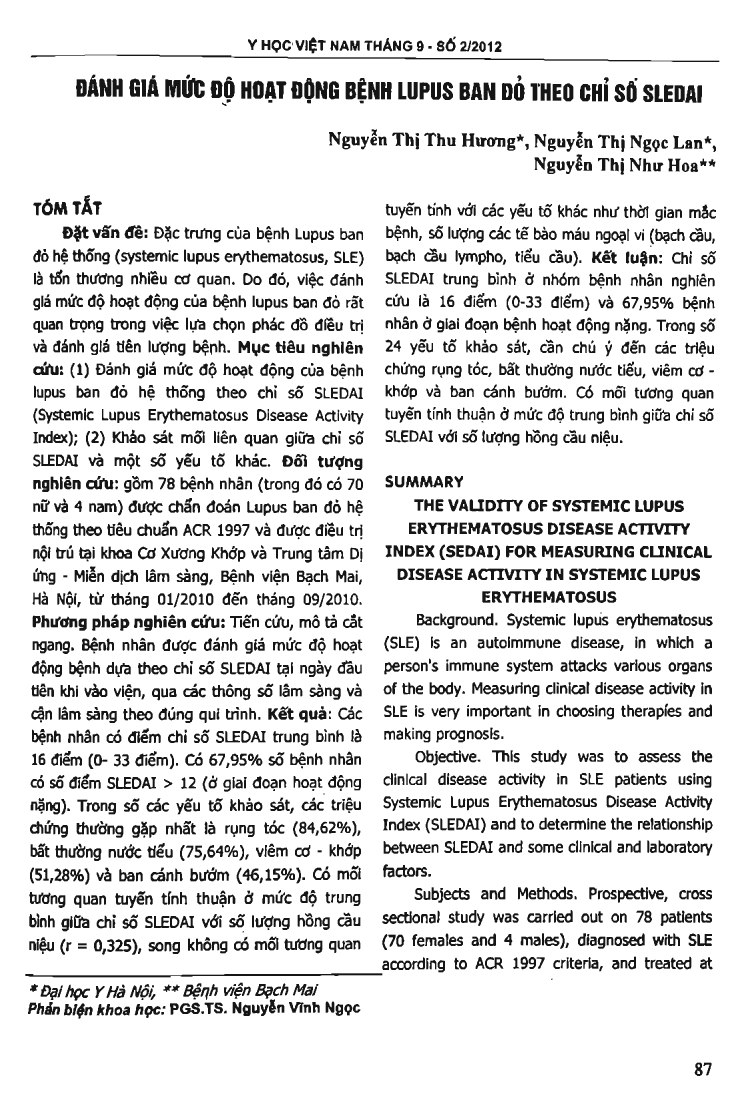
Background. Systemic lupus erythematosus (SLE) is an autoimmune disease, in which a person's Immune system attacks various organs of the body. Measuring clinical disease activity in SLE is very important in choosing therapies and making prognosis. Objective. This study was to assess the clinical disease activity in SLE patients using Systemic Lupus Erythematosus Disease Activity Index (SLEDAI) and to determine the relationship between SLEDAI and some clinical and laboratory factors. Subjects and Methods. Prospective, cross sectional study was carried out on 78 patients (70 females and 4 males), diagnosed with SLE according to ACR 1997 criteria, and treated at Rheumatology Department and Center of Allergology and Clinical Immunology of Bach Mai Hospital during the period from Jan. 2010 to Sep. 2010. On the first visit, the patients were clinically and laboratory examined and evaluated, and the disease activity was determined using the SLEDAI scale. Results. The mean score of SLEDAI was 15.95 + or - 0.79 (0 - 33). The patients at the severe stage of the disease (SLEDAI score 12) accounted for 67.95 percent. The most common manifestations of the study group were hair loss (84.62 percent), abnormal urine (75.64 percent), myositis and arthritis (51.28 percent) and malar rash (46.15 percent). There was a linear correlation in moderate level between the SLEDAI index and the number of urinary erythrocytes (r = 0.325), but no correlation with other factors, such as disease duration and peripheral blood cell counts. Conclusions. The studied patients had an average SLEDAI index of 16 points (0-33) and 67.95 percent of them were in the severely active phase. Hair loss, abnormal urine test, myositisarthritis and malar rash were the most common abnormalities observed among 24 elements surveyed. There is a linear correlation in moderate level between the SLEDAI index and the number of urinary erythrocytes.
- Đăng nhập để gửi ý kiến
